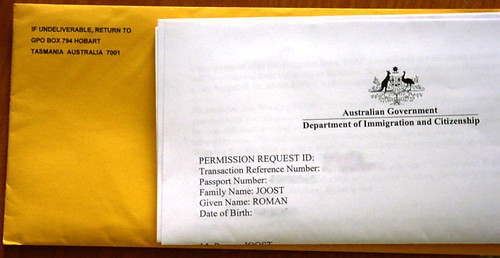These days, travelling to Australia has become quicker and easier thanks to the various options available to us. Among them is the famous eVisitor, often likened to a classic visa. But what is it really? Can the eVisitor for Australia be considered a visa?
What is eVisitor?
First of all, it's worth defining what the eVisitor is. It is an electronic authorisation allowing nationals of certain countries to travel to Australia for short stays, whether for tourism or business reasons. Eligible applicants do not need to apply for a traditional visa at an embassy or consulate. To obtain an eVisitor, all you have to do is fill in an online form, which is generally inexpensive (as there are no consular fees).
Eligibility requirements for eVisitor
To benefit from eVisitor, certain conditions must be met:
- Be national one of the member countries of the European Union, as well as a few other countries such as Switzerland and Norway.
- Having a valid passport for the duration of your stay in Australia.
- Intend to stay in Australia for a period not exceeding 3 months.
- Do not have any serious criminal convictions or health problems that could threaten the country's security.
The eVisitor, an electronic visa?
The question then arises: should the eVisitor be considered as a visa? In reality, the answer is nuanced. It is true that the eVisitor has certain characteristics of traditional visas, particularly in terms of eligibility conditions and authorised length of stay. However, there are also some notable differences between these two types of document.
 Similarities between the eVisitor and the traditional visa
Similarities between the eVisitor and the traditional visa
The eVisitor has a lot in common with a traditional visa:
- You must be a national of an eligible country: as with a traditional visa, only certain countries are authorised to use the eVisitor.
- Limited length of stay: in both cases, travellers can only stay in Australia for a specific period (3 consecutive months maximum).
- Entry requirements: people wishing to enter Australia with an eVisitor must meet certain conditions, similar to those required for a traditional visa (valid passport, no criminal record, etc.).
The differences between the eVisitor and the traditional visa
However, there are a number of reasons for this, eVisitor differs from a traditional visa in a number of ways :
- The application procedure You generally have to go to an embassy or consulate to apply for a standard visa, eVisitor applications are made entirely online.
- The cost Most traditional visas are subject to a fee, whereas the eVisitor is generally free (excluding agency fees).
- Processing time eVisitor applications are often processed quickly (sometimes within a few hours), whereas it can take several weeks to obtain a traditional visa.
eVisitor, a simplified electronic visa
It therefore appears that the eVisitor is halfway between a traditional visa and a simple travel authorisation. It has certain features in common with traditional visas, but its application procedure, cost and processing time are much simpler. So, even though it is not considered a visa in its own right, the eVisitor is an interesting alternative for eligible travellers who want to discover Australia without having to go through complex administrative procedures.
FAQ: your questions about the eVisitor for Australia
How do I apply for an eVisitor for Australia?
To apply for an eVisitor, simply complete an online form on the Australian authorities' official website or via an agency. It is recommended that you submit your application at least 2 weeks before your planned departure date.
Is the eVisitor valid for several entries into Australia?
YesThe eVisitor is a multiple-entry electronic visa. This means that you can enter and leave Australia as many times as you like during the period of validity of your eVisitor (12 months).
How long is the eVisitor valid for?
The eVisitor is valid for 12 months from the date of issue. However, each stay in Australia must not exceed 3 consecutive months.

 An agency service
An agency service 